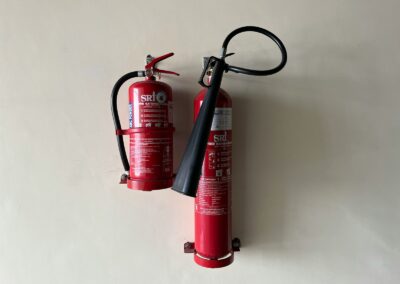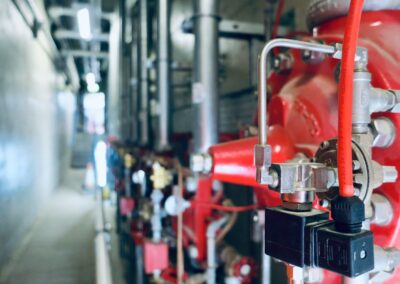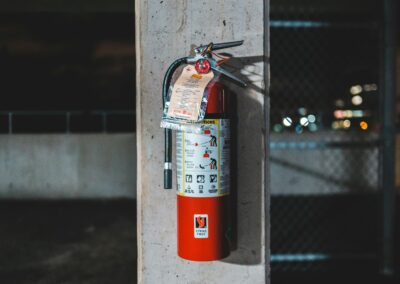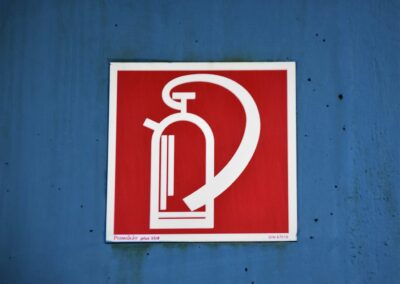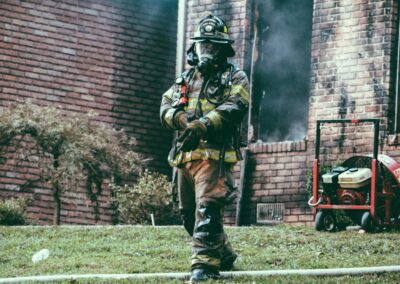Effective Fire Protection for Industrial and Aviation Settings
Understanding Foam-Based Fire Suppression Systems
Foam-based fire suppression systems are a critical component in the arsenal of fire protection technologies, especially effective in combating flammable liquid fires commonly found in industrial and aviation settings. These systems utilize a mixture of foam concentrate, water, and air to create a foam blanket that suppresses fire by cooling the fuel and cutting off its oxygen supply. In regions like Saudi Arabia and the UAE, where industrial growth and aviation activities are rapidly expanding, the implementation of foam-based fire suppression systems is vital for ensuring safety and protecting valuable assets.
The primary advantage of foam-based systems lies in their ability to form a barrier between the fuel and the fire. This barrier effectively prevents the release of flammable vapors and cools the affected area, significantly reducing the likelihood of re-ignition. In industrial environments such as oil refineries, chemical plants, and fuel storage facilities, the presence of flammable liquids poses a constant risk of fire. Foam-based suppression systems are designed to handle such scenarios efficiently, ensuring that any fire outbreaks are quickly controlled and extinguished.
In aviation settings, foam-based systems are equally important. Aircraft and airport facilities often store large quantities of aviation fuel, which is highly flammable. A fire in these environments can have catastrophic consequences, endangering lives and causing extensive damage. Foam-based fire suppression systems are designed to respond rapidly to such incidents, deploying foam to cover the fuel and extinguish the fire. This quick action is crucial for minimizing damage and ensuring the safety of passengers and personnel. In bustling hubs like Riyadh and Dubai, where aviation plays a key role in economic development, the adoption of advanced fire suppression technologies is essential.
Advantages of Foam-Based Systems in Fire Suppression
Foam-based fire suppression systems offer several key advantages that make them particularly suitable for industrial and aviation settings. One of the primary benefits is their ability to provide rapid and effective fire suppression. Foam systems are designed to deploy quickly, covering the fire with a blanket of foam that cools and isolates the fuel source. This rapid response is crucial in environments where every second counts in preventing the spread of fire and reducing damage.
Another significant advantage of foam-based systems is their versatility. These systems can be used to combat a wide range of fire types, including Class A (ordinary combustibles), Class B (flammable liquids), and even some Class C (electrical) fires. This versatility makes them an ideal choice for complex industrial environments where different types of fire hazards may be present. Additionally, foam-based systems can be tailored to meet the specific needs of different settings, with options for high-expansion, low-expansion, and medium-expansion foams. This adaptability ensures that the most effective suppression method is used for each unique situation.
The environmental impact of fire suppression systems is also an important consideration. Foam-based systems are designed to minimize environmental damage by using environmentally friendly foam concentrates that are biodegradable and non-toxic. This is particularly important in regions like Saudi Arabia and the UAE, where there is a strong emphasis on sustainability and environmental protection. By choosing foam-based fire suppression systems, businesses can ensure that they are meeting their fire safety needs while also adhering to environmental standards and regulations.
Integrating Modern Technology for Enhanced Fire Safety
The Role of AI and IoT in Foam-Based Fire Suppression Systems
The integration of modern technology such as artificial intelligence (AI) and the Internet of Things (IoT) is enhancing the effectiveness of foam-based fire suppression systems. AI algorithms can analyze data from sensors and cameras to detect fires more quickly and accurately than traditional methods. By processing information in real-time, AI can identify the exact location and severity of a fire, triggering the foam-based system to respond immediately. In advanced cities like Riyadh and Dubai, where smart city initiatives are being implemented, AI-enhanced fire suppression systems represent the future of building safety.
The Internet of Things (IoT) further expands the capabilities of foam-based fire suppression systems. IoT devices can connect fire suppression systems with other building management systems, such as security and HVAC systems. This connectivity allows for a coordinated response to fire incidents, ensuring that all safety measures are activated simultaneously. For example, in the event of a fire, IoT-enabled systems can automatically shut down ventilation to prevent the spread of smoke, activate alarms, and initiate evacuation procedures. This level of integration enhances the overall safety and efficiency of fire suppression efforts, particularly in large and complex buildings.
Blockchain technology can also play a role in improving the reliability and security of fire suppression systems. By recording data from fire incidents on a blockchain, businesses can ensure that the information is tamper-proof and verifiable. This transparency is crucial for post-incident investigations and for meeting regulatory compliance requirements. In regions like Saudi Arabia and the UAE, where regulatory standards are stringent, the use of blockchain technology can enhance the credibility and effectiveness of fire suppression systems.
Leadership and Management in Fire Safety Technology
Implementing advanced foam-based fire suppression systems requires strong leadership and effective management skills. Business executives and mid-level managers in Saudi Arabia and the UAE must understand the strategic importance of investing in modern fire safety technology and take proactive steps to integrate it into their operations. This involves developing comprehensive plans for procurement, training, and maintenance of fire suppression systems, as well as fostering a culture of safety and innovation within their organizations.
Effective leadership also involves advocating for the adoption of advanced fire suppression technologies at the municipal and governmental levels. By highlighting the benefits of these technologies, such as improved safety, efficiency, and environmental compliance, leaders can secure the necessary support and funding for their deployment. In cities like Riyadh and Dubai, where government initiatives often drive technological advancements, strong advocacy and strategic planning are essential for the widespread adoption of foam-based fire suppression systems.
Project management skills are crucial for the successful deployment of these systems. This includes planning and executing pilot programs, managing budgets, and coordinating with various stakeholders to ensure a smooth rollout. By applying best practices in project management, business leaders can ensure that their fire safety initiatives are well-structured, on budget, and delivered on time. This level of diligence and organization is vital for achieving the desired outcomes and maximizing the benefits of foam-based fire suppression systems.
Conclusion: Embracing Advanced Fire Safety Solutions
In conclusion, foam-based fire suppression systems offer a highly effective solution for protecting industrial and aviation settings from flammable liquid fires. By leveraging the benefits of rapid deployment, versatility, and environmental sustainability, these systems provide a robust defense against fire hazards. The integration of AI, IoT, and blockchain technology further enhances their effectiveness, ensuring that fire suppression efforts are precise, coordinated, and reliable. For business executives, mid-level managers, and entrepreneurs in Saudi Arabia and the UAE, understanding and adopting these advanced fire safety solutions is key to protecting their organizations, achieving strategic goals, and sustaining long-term success. By embracing foam-based fire suppression systems and enhancing their leadership and management skills, business leaders can ensure a safer and more secure future for their communities and operations.
#FoamBasedFireSuppressionSystems #FireSafety #IndustrialFireProtection #AviationFireSafety #SaudiArabia #UAE #Riyadh #Dubai #AI #Blockchain #Metaverse #GenerativeAI #BusinessSuccess #Leadership #ManagementSkills #ProjectManagement


